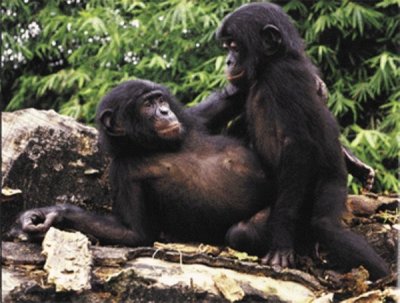Chimpanzee Reproduction
 The reproduction system in chimpanzees is very complex, and many misconceptions arose early in the study of these animals about the nature of their mating system. Chimpanzees are polygynandrous, as both male and female chimpanzees have multiple partners.
The reproduction system in chimpanzees is very complex, and many misconceptions arose early in the study of these animals about the nature of their mating system. Chimpanzees are polygynandrous, as both male and female chimpanzees have multiple partners.
It is also believed that chimpanzees take part in the mating process for social interactions at times. Although mating can occur during any time of the year, it is more common in rainy season.
Chimpanzee Reproduction Facts
Male chimpanzees are capable of reproducing when they are 16 years old whereas females reach estrus (the swelling of the ano-genital region that signifies that the female chimpanzee is ready to breed) at the age of 10.
The estrus cycle lasts for 36 days and during that time, the female experiences major changes in the shape, size, and color of the genital skin. This is due to increase in the level of estrogen hormone. The males are attracted to the additional hormonal scents that the females offer during this time of the cycle.
Copulation
Copulation is typically initiated by males. There are three types of mating patterns exhibited by chimpanzees. The first is called opportunistic, which is characterized by non-competitive mating. In most cases, receptive females are mated by several mature males.
The second kind is possessiveness. With this kind of mating, the dominant males may become possessive and prevent their subordinates from copulating with the females. The third kind is a consortship, which is when a male and a female leave the group to live on their own and avoid other chimpanzees.
After the Birth
The gestation period in female chimpanzees is around eight months. They usually have a single chimpanzee baby at one time as twins are very rare. Female chimpanzees take good care of their young ones. For the first six months, the mother will carry her baby wherever she goes. After one year, the baby chimpanzees start taking care of themselves.
